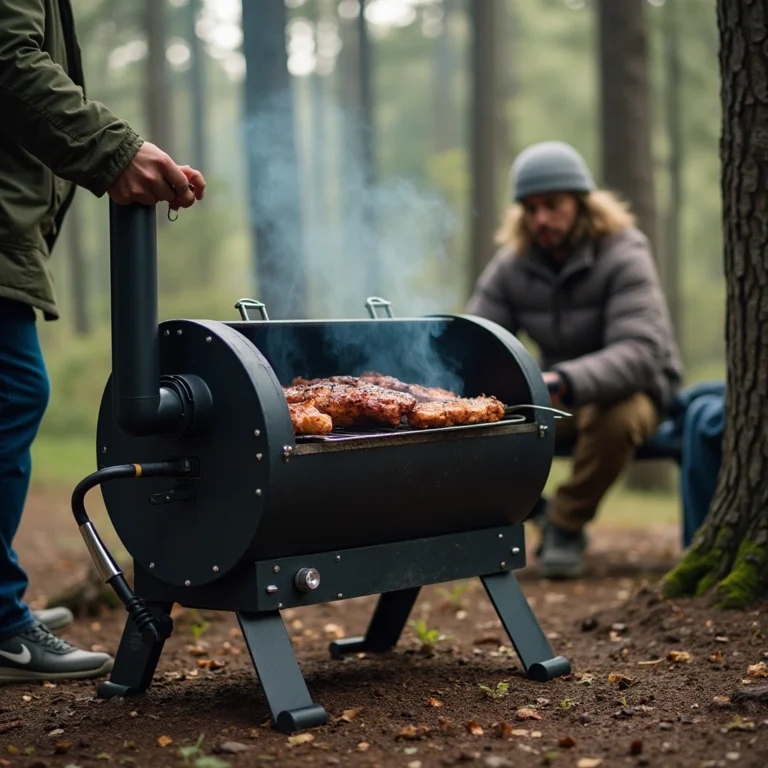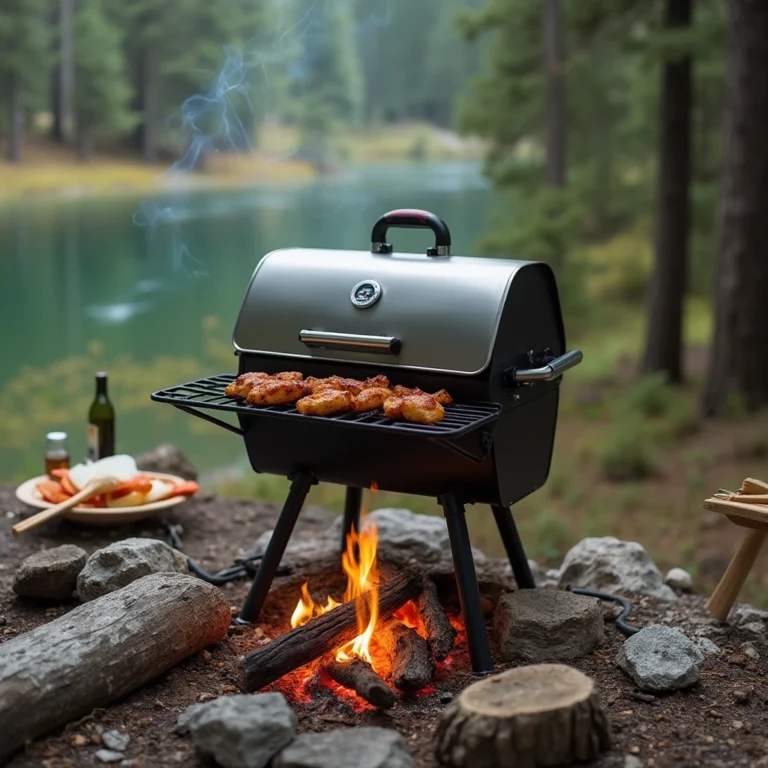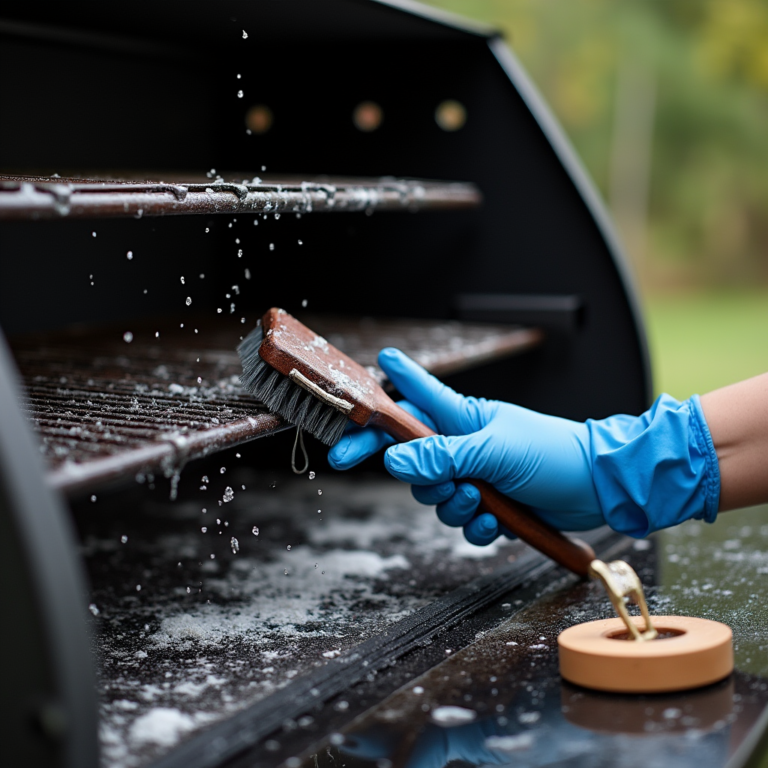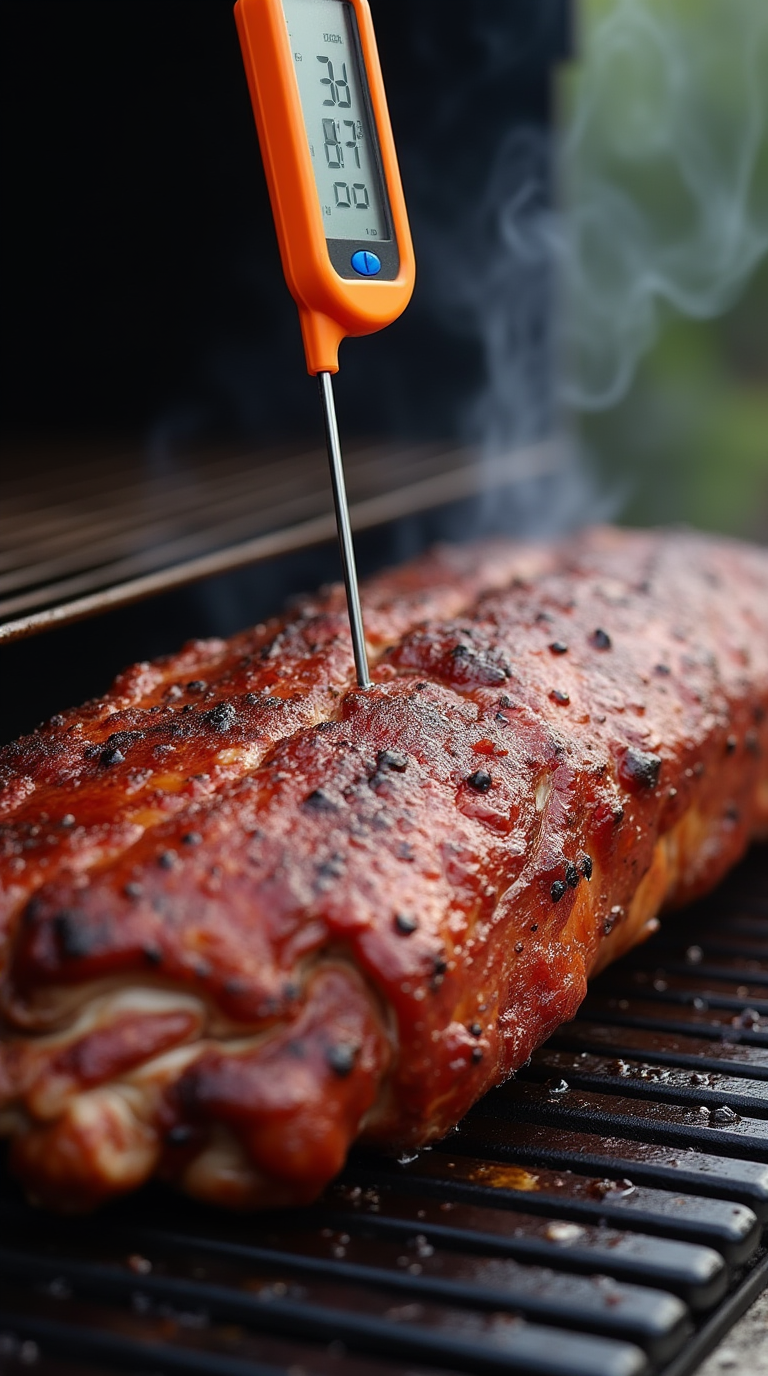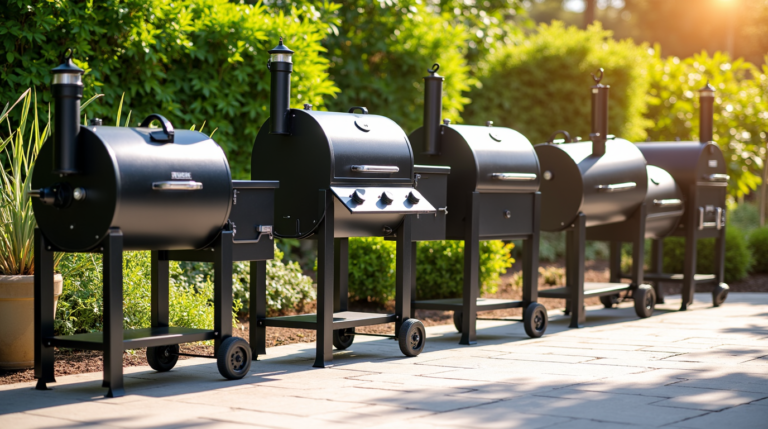Pastrami Rub: Best 7 Bold Spices for Perfect Flavor
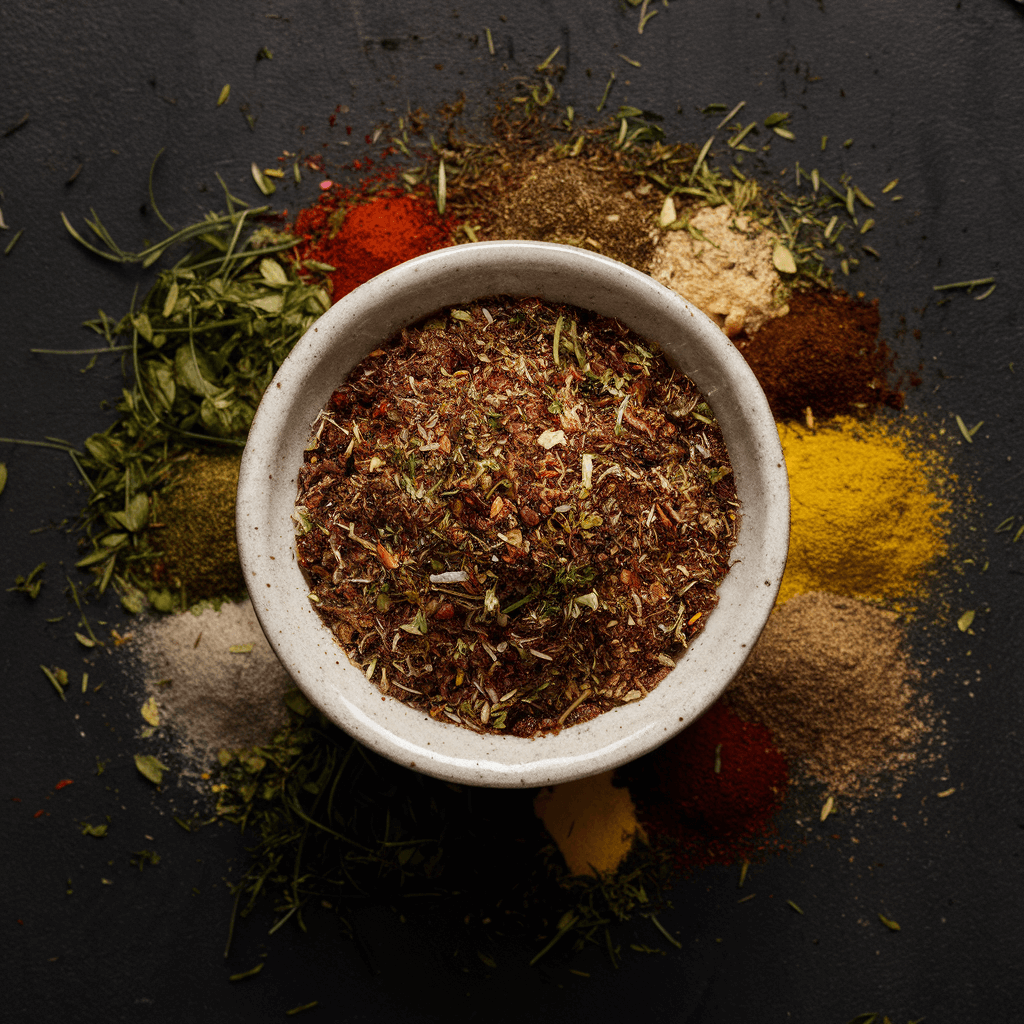
What is Pastrami Rub?
Picture this: the year is 1888, and a bustling deli in New York City is filled with the intoxicating aroma of smoked meat. A customer leans over the counter and asks, “What’s that heavenly smell?” The deli owner, with a proud grin, replies, “That, my friend, is pastrami—cured, smoked, and rubbed to perfection.” Fast forward to today, and pastrami remains a beloved delicacy, with its signature flavor rooted in the magic of the pastrami rub.
Pastrami rub is a blend of spices and herbs that transforms a simple cut of beef into a culinary masterpiece. Originating from Eastern Europe, particularly Romania, pastrami was brought to America by Jewish immigrants. The rub typically includes black pepper, coriander, garlic, mustard seeds, and paprika, creating a bold, peppery, and slightly sweet flavor profile. Regional variations exist—some recipes add brown sugar for a touch of sweetness, while others incorporate smoked paprika for an extra layer of depth.
Traditionally, the rub is massaged into the meat, which is then cured and smoked. This process not only infuses the meat with flavor but also creates the signature crust, or “bark,” that pastrami lovers crave. Whether you’re a seasoned pitmaster or a home cook, mastering the art of pastrami rub is a journey worth taking. Ready to dive in? Let’s explore how you can bring this iconic flavor to your kitchen.
- For a perfectly spiced and smoked Turkey Pastrami, follow this easy-to-use recipe.
Mastering Pastrami Rub at Home
Creating pastrami rub at home is easier than you might think, but it requires attention to detail and a few essential tools. Start with a high-quality cut of beef brisket or navel. The key to a great rub lies in the balance of spices, so invest in fresh, whole spices and grind them yourself for maximum flavor. A spice grinder or mortar and pestle will be your best friends here.
Essential Tools and Ingredients
To craft the perfect pastrami rub, you’ll need:
- Black peppercorns (for that signature kick)
- Coriander seeds (adds a citrusy, earthy note)
- Garlic powder (for depth and aroma)
- Mustard seeds (brings a tangy, nutty flavor)
- Paprika (smoked or sweet, depending on your preference)
- Brown sugar (optional, for a hint of sweetness)
Core Techniques for Perfect Results
Once you’ve gathered your ingredients, it’s time to get hands-on. Toast the whole spices lightly in a dry pan to release their essential oils, then grind them into a coarse powder. Combine the spices with garlic powder and brown sugar (if using), and generously coat the meat. Massage the rub into every nook and cranny—this step is crucial for ensuring even flavor distribution.
After applying the rub, let the meat rest in the refrigerator for at least 24 hours. This allows the flavors to penetrate deeply. When you’re ready to cook, smoke the meat low and slow until it reaches an internal temperature of 195°F. The result? A tender, flavorful pastrami with a crust that crackles with every bite.
Pro Tips and Flavor-Enhancing Tricks
For an extra layer of complexity, consider adding a splash of Worcestershire sauce or a dash of cayenne pepper to your rub. If you’re short on time, pre-made spice blends can work in a pinch, but nothing beats the satisfaction of crafting your own. And don’t forget—patience is key. The longer you let the rub work its magic, the more flavorful your pastrami will be.
Whether you’re serving it on rye bread with mustard or enjoying it straight off the cutting board, homemade pastrami is a labor of love that pays off in every bite. Ready to start your pastrami journey? Head back to our Homepage for more tips, recipes, and inspiration.
Table of Contents
📜 Historical Information
Pastrami rub traces its roots to Eastern Europe, particularly Romania, where it was originally used to preserve meat. The technique was brought to the United States by Jewish immigrants in the late 19th century, evolving into the beloved deli staple we know today. Over time, the rub has been adapted to include a variety of spices, reflecting both cultural traditions and modern culinary creativity.
🥕 What You’ll Need
Here’s everything you need to make a classic pastrami rub for 4 servings:
- 3 tablespoons black peppercorns (coarsely ground; substitute with white peppercorns for a milder flavor)
- 2 tablespoons coriander seeds (toasted for enhanced aroma; use ground coriander if seeds are unavailable)
- 1 tablespoon smoked paprika (look for high-quality, deep red paprika for the best flavor)
- 1 tablespoon garlic powder (opt for organic garlic powder for a richer taste)
- 1 tablespoon onion powder (choose non-GMO for a cleaner flavor profile)
- 1 tablespoon brown sugar (adds a hint of sweetness; substitute with coconut sugar for a healthier option)
- 1 teaspoon mustard seeds (optional, for a tangy kick)
- 1 teaspoon kosher salt (use coarse salt for better texture)
Health Benefits of Key Ingredients
- Black Peppercorns: Rich in antioxidants, black pepper aids digestion and enhances nutrient absorption.
- Coriander Seeds: Known for their anti-inflammatory properties, coriander seeds also support heart health and digestion.
Nutrition Facts (Per Serving)
| Calories | Protein | Fat | Carbohydrates | Fiber |
|---|---|---|---|---|
| 15 kcal | 0.5 g | 0.2 g | 3 g | 1 g |
👩🍳 Cooking Instructions Pastrami Rub
Pastrami Rub: Best 7 Bold Spices for Perfect Flavor
Cuisine: American4
servings15
minutes25
kcal15
minutesIngredients
- Pastrami Rub
2 tablespoons coarsely ground black pepper
2 tablespoons coarsely ground coriander seeds
1 tablespoon garlic powder
1 tablespoon onion powder
1 teaspoon smoked paprika
1/2 teaspoon brown sugar
Directions
- Instructions
- Combine all the ingredients in a small bowl.
- Mix thoroughly until the spices are evenly distributed.
- Generously apply the rub to your meat of choice before the curing and smoking process.
1. Prep Work
Gather all your spices and tools. You’ll need a spice grinder or mortar and pestle for grinding the peppercorns and coriander seeds. Toast the coriander seeds in a dry skillet over medium heat for 1-2 minutes until fragrant. This step enhances their flavor.
2. Core Technique Walkthrough
Combine all the ingredients in a bowl. Use a spice grinder to coarsely grind the black peppercorns and coriander seeds. Mix them with the smoked paprika, garlic powder, onion powder, brown sugar, mustard seeds, and kosher salt. Stir until evenly combined. Store the rub in an airtight container if not using immediately.
3. Doneness Indicators
The rub should have a coarse texture, with visible specks of peppercorns and coriander. It should smell aromatic, with a balance of smoky, sweet, and spicy notes. If the mixture feels too fine, add a few extra peppercorns and grind lightly.
4. Pro Preservation Method
Store the pastrami rub in an airtight container in a cool, dark place. It will stay fresh for up to 3 months. For longer storage, keep it in the refrigerator or freezer.
🌍 Creative Variations
Dietary Needs
For a low-sodium version, reduce the kosher salt or replace it with a salt-free seasoning blend. For a sugar-free option, omit the brown sugar or use a natural sweetener like stevia.
Regional Flavors
- Tex-Mex Twist: Add 1 teaspoon of chili powder and 1/2 teaspoon of cumin for a smoky, spicy kick.
- Mediterranean Flair: Incorporate 1 teaspoon of dried oregano and 1/2 teaspoon of lemon zest for a fresh, herbaceous note.
Seasonal Ingredients
In the fall, add a pinch of ground cinnamon or nutmeg for a warm, autumnal flavor. In the summer, mix in a teaspoon of dried thyme or rosemary for a lighter, herbaceous touch.
Final Thoughts
This pastrami rub recipe is a versatile blend that brings depth and flavor to your meats. Whether you’re making classic pastrami or experimenting with regional twists, this rub is sure to elevate your dishes. Don’t forget to store it properly to keep it fresh for future use. Happy cooking!
Insider Techniques Pastrami Rub
Reveal 3 rarely-shared professional methods covering:
- Texture Mastery (Crispy/Tender Balance): Achieving the perfect texture in pastrami requires a delicate balance between a crispy crust and tender meat. Start by applying a coarse grind of black pepper and coriander seeds to create a robust outer layer. For tenderness, ensure the meat is brined for at least 5-7 days before applying the rub. The brining process breaks down muscle fibers, allowing the rub to penetrate deeply while keeping the interior moist during smoking.
- Flavor Layering (Herb/Spice Timing): Timing is everything when layering flavors. Apply the base rub (salt, sugar, garlic powder) 24 hours before smoking to allow the meat to absorb the foundational flavors. Add the secondary layer (mustard seeds, paprika, and crushed red pepper) just before smoking to preserve the aromatic oils in the spices. This dual-layer approach ensures a complex flavor profile that evolves with every bite.
- Time-Saving Prep Hacks: For busy chefs, pre-mix your rub in bulk and store it in airtight containers. Use a food processor to grind spices uniformly, saving time and ensuring consistency. When applying the rub, use a shaker bottle for even distribution, and always pat the meat dry before seasoning to help the rub adhere better.
Storage Instructions Pastrami Rub
Detail optimal methods for:
- Short-Term (3 Days): Store the rub in an airtight glass jar at room temperature, away from direct sunlight. Glass prevents moisture absorption and preserves the rub’s potency. For pre-rubbed meat, wrap it tightly in plastic wrap and refrigerate.
- Long-Term (3 Months): For extended storage, use vacuum-sealed bags or mason jars with oxygen absorbers. Keep the rub in a cool, dark pantry. If the rub clumps due to humidity, break it apart with a fork or pulse it in a spice grinder before use.
- Revival Techniques for Dried-Out Portions: If your rub loses its aroma, toast the spices lightly in a dry skillet to reawaken their essential oils. Let them cool before grinding and mixing back into the rub.
Plate Perfection
Suggestions for:
- Occasion-Based Presentation: For casual gatherings, serve pastrami on rustic wooden boards with pickles and mustard. For gourmet settings, slice the pastrami thinly and fan it out on a white porcelain plate, garnished with microgreens and edible flowers.
- Garnish Pairings: Fresh dill, parsley, or chives complement the smoky flavors. Edible flowers like nasturtiums add a pop of color and a subtle peppery note.
- Temperature Control During Service: Keep pastrami warm by placing it on a preheated platter or using a chafing dish. Avoid overheating, as it can dry out the meat. Serve at an internal temperature of 140°F (60°C) for optimal texture and flavor.
Fix Common Issues
Solutions for:
- Over-Seasoning Fixes: If the rub is too salty, soak the meat in cold water for 1-2 hours to draw out excess salt. For overly spicy rubs, balance the heat with a sweet glaze or serve with cooling sides like coleslaw.
- Texture Rescue Methods: If the crust is too hard, wrap the pastrami in foil and steam it for 10-15 minutes to soften the exterior. For dry meat, slice it thinly and serve with a flavorful au jus or mustard sauce.
- Flavor Balancing Acts: If the rub lacks depth, add a pinch of smoked paprika or a dash of Worcestershire sauce to enhance umami. For a brighter flavor, incorporate citrus zest or a splash of apple cider vinegar.

Harmonious Combinations
Recommend pairings across:
- Beverages: Pair pastrami with a robust red wine like Cabernet Sauvignon, a malty beer like a brown ale, or a tangy non-alcoholic option like ginger beer.
- Side Dishes: Serve with creamy mashed potatoes, roasted root vegetables, or a tangy sauerkraut to balance the richness of the meat.
- Sauce Pairings: Complement pastrami with a creamy horseradish sauce, a tangy mustard, or a sweet and spicy barbecue glaze.
John Marshall’s pro kitchen secrets: Mastering pastrami rub is about precision, patience, and passion. By following these techniques, you’ll elevate your culinary creations to restaurant-quality standards.
Ingredient Flexibility of Pastrami Rub
Explore substitutions for:
When making a Pastrami Rub, ingredient flexibility is key to accommodate dietary restrictions, regional availability, and flavor preferences. For vegan options, replace honey with maple syrup or agave nectar. Gluten-free diets can be accommodated by ensuring all spices and additives are certified gluten-free. If certain spices like coriander or mustard seeds are unavailable, consider using ground versions or alternatives like fennel seeds or turmeric. For a different flavor profile, experiment with smoked paprika or chipotle powder instead of traditional black pepper.
Troubleshooting Guide
Q: What rub to use for pastrami?
A classic pastrami rub is essential for its signature flavor. A well-balanced spice blend typically includes:
2 tablespoons coarsely ground black pepper
2 tablespoons coarsely ground coriander seeds
1 tablespoon garlic powder
1 tablespoon onion powder
1 teaspoon smoked paprika
1/2 teaspoon brown sugar
This rub is applied generously to the meat before the curing, smoking, and steaming process.
Q: What makes pastrami taste like pastrami?
Curing Process: A salt-based cure, often enhanced with pink curing salt, preserves the meat and intensifies its flavor.
Signature Spice Rub: The combination of black pepper, coriander, garlic, and other spices creates the distinctive pastrami flavor.
Smoking: Low-temperature smoking with wood chips (like hickory or oak) imparts a deep, smoky character.
Steaming: Finishing with a steam cook step helps tenderize the meat and lock in moisture, resulting in that classic pastrami texture.
Q: How long to let pastrami rest?
Post-Cooking Rest: After smoking or steaming, allow the pastrami to rest for 15-20 minutes. This helps the juices redistribute and ensures a moist texture when sliced.
Curing/Marinating: Follow the recommended curing time (often 5-7 days for brisket pastrami) to ensure maximum flavor absorption.
Q: How to tell if pastrami is good?
Texture: The meat should be tender, moist, and slice easily against the grain.
Flavor: There should be a balanced mix of saltiness, spiciness, and smokiness that defines classic pastrami.
Aroma: A rich, inviting smoky and spiced aroma is a good indicator of quality.
Appearance: Look for a well-formed crust and even color throughout the meat, suggesting proper curing and smoking.
Internal Temperature: For beef pastrami, an internal temperature of around 195°F (90°C) usually indicates maximum tenderness.
Address common issues like:
Texture problems can arise when the rub is too dry or too moist. If the rub is too dry, add a small amount of olive oil or water to achieve a paste-like consistency. For overly moist rubs, incorporate more dry spices or let it sit uncovered to reduce moisture. Balancing flavors is crucial; if the rub is over-seasoned, dilute it with a neutral base like brown sugar or salt. Adjust cooking times based on the thickness of the meat and the cooking method used, ensuring the pastrami is tender but not overcooked.
Make-Ahead Strategies
Detail methods for:
Preparing a Pastrami Rub in advance can save time. For partial prep, mix dry spices and store them in an airtight container for up to a month. Combine with wet ingredients just before use. The entire rub can be frozen for up to three months; thaw in the refrigerator before applying. Store prepared pastrami in the fridge for up to five days or freeze for longer storage. Reheat gently in the oven or on the stovetop to retain moisture and flavor.
Health-Conscious Options
Provide alternatives for:
For a lower-calorie version, reduce the amount of sugar in the rub or use a sugar substitute like stevia. To adjust macronutrients, increase protein by adding a protein-rich spice blend or reduce carbs by minimizing sugar content. Allergen-free variations can be created by avoiding common allergens like mustard or using allergen-free spice blends. Always check labels to ensure ingredients meet dietary needs.
Taste Personalization
Suggest modifications for:
Customizing the spice level is easy—reduce or increase the amount of black pepper or chili flakes to suit your preference. Incorporate regional flavors by adding spices like cumin for a Middle Eastern twist or five-spice powder for an Asian influence. For kid-friendly adaptations, tone down the heat and add a touch of sweetness with brown sugar or honey. Experiment with different combinations to create a Pastrami Rub that reflects your unique taste.“`
Key Takeaways of Pastrami Rub
Congratulations! You’ve just unlocked the secrets to crafting a mouthwatering pastrami rub that will elevate your smoking game to new heights. Let’s recap what makes this recipe truly special:
Essential Techniques Mastered
From balancing the perfect blend of spices to understanding the importance of curing time, you’ve learned the foundational techniques that make pastrami a culinary masterpiece. Whether you’re a seasoned pitmaster or a beginner, these skills will serve you well in countless future recipes.
Special Ingredients Highlighted
This rub isn’t just about flavor—it’s about tradition. The combination of coriander, black pepper, and garlic powder creates a bold, aromatic profile that pays homage to the classic deli-style pastrami we all love. Don’t forget the brown sugar, which adds a subtle sweetness to balance the savory spices.
Cultural Significance Explored
Pastrami isn’t just a dish; it’s a story. Rooted in Eastern European Jewish cuisine and perfected in New York delis, this recipe connects you to a rich culinary heritage. Every bite is a nod to the generations of cooks who perfected this art.
Your Culinary Journey Starts Here
Now that you’ve got the recipe, it’s time to take action! Here’s how you can dive in:
Join Our Foodie Family
Your journey doesn’t end here. Join our vibrant community of food lovers and continue to grow your skills:
• Follow on Instagram: Get daily inspiration, behind-the-scenes tips, and mouthwatering recipes by following @Smokerrecipes.
• Explore Pinterest Boards: Dive into our curated boards for more dessert ideas, seasonal recipes, and creative plating tips.
• Join Our Facebook Group: Connect with fellow foodies, share your cooking triumphs, and get advice in our friendly Facebook community.
Expand Your Skills
Ready to take your cooking to the next level? Here are some ideas to keep the momentum going:
Related Recipes to Try
If you loved this pastrami rub, why not try your hand at smoked brisket or homemade corned beef? These recipes build on the same techniques and flavors, making them perfect next steps.
Seasonal Variations to Explore
Experiment with seasonal twists! Add a touch of smoked paprika for a wintery warmth or incorporate citrus zest for a bright summer flavor. The possibilities are endless.
Cooking Challenges to Attempt
Challenge yourself to master a new technique each month. Whether it’s perfecting your smoking game or experimenting with brining, every challenge is an opportunity to grow.
Remember, cooking is a journey, not a destination. Every recipe you try, every dish you perfect, brings you closer to becoming the chef you’ve always wanted to be. So, grab your apron, fire up your smoker, and let’s create something unforgettable together. Happy cooking!


